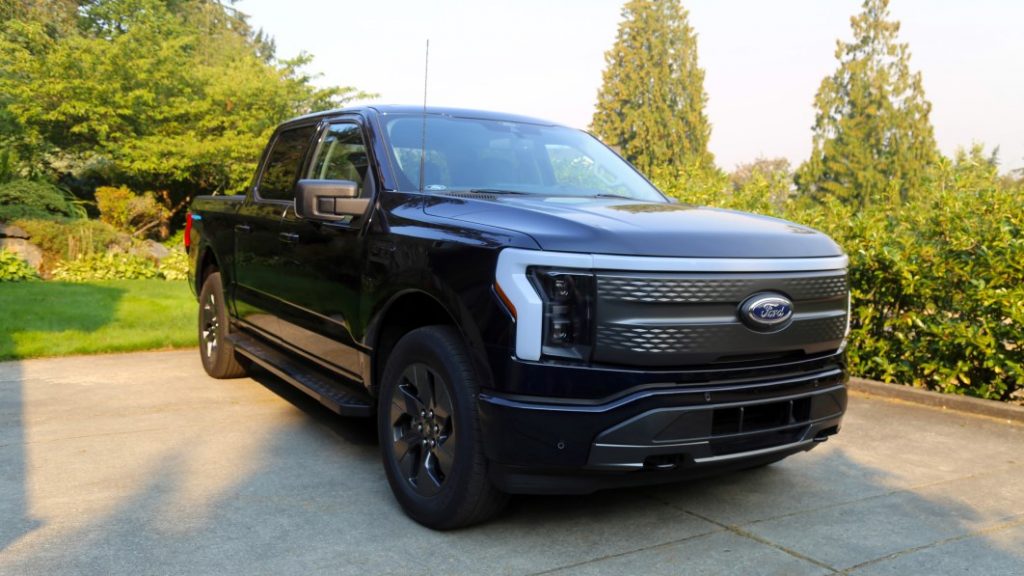Ford dealers begin to contest Model E sales plan

Over about the past 18 months, Ford’s been developing and refining its dealer strategy. First came the break into three divisions, Ford Blue for ICE vehicles, Ford Pro for commercial vehicles, and Ford Model E for battery-electric vehicles. That last division took a big cannonball in the dealer pool in September. Ford joined the annual dealer conference in Las Vegas to explain its vision for EV outlets as being composed of Model E Certified and Model E Certified Elite dealership tiers. The automaker gave dealers an initial date of October 31 to decide which tier they wanted to join, the new regime commencing January 1, 2024. Dealer pushback since the September meeting convinced Ford to push the buy-in decision back to December 2. Automotive News reports dealers are generally supportive of Ford’s EV direction, but they are firming up their resistance to the terms of the tiers.
Becoming Certified and Certified Elite involve soft improvements like specialized product training, offering delivery, pickup and loaner vehicles to EV buyers, and creating a pipeline to sell subscription services and Ford Pass perks. Those provoke no ire. The problems begin with the requirement to install EV chargers. Certified storefronts need to pay about $500,000 up-front to install at least one publicly available DC fast charger putting out a minimum of 120 kW. Certified Elite storefronts need to pay about $1.2 million to install at least two DC fast chargers as part of the Blue Oval Network. Part of those funds also pay for upgrades like EV repair facilities, but they’re mostly for chargers. The problems grow over vehicle allotments, with Certified dealers getting a 25 electric vehicles per year to sell but without being able to keep them on the showroom floor. Dealers have yet more issues with Ford’s insistence on no-haggle pricing, which comes down to customers being charged only the sum they agreed in writing to pay on day one.
Finally, automaker CEO Jim Farley wants dealers to find $2,000 in savings per vehicle to give Ford’s profit margins a chance to get close to Tesla’s. Farley admitted this meant “dealer margins … are going to shift.” A Ford dealer told AN the automaker “indicated that he would lose 2 percentage points of guaranteed margin over the first two years of the program unless he meets certain requirements. [The dealer] said Farley has stressed that margins will decline and that Ford dealers should sell customers subscription services to compensate.”
Ford says it worked with dealers to develop the tiers, and apparently Ford created the lower Certified tier based on the feedback from those discussions. Nevertheless, now that the dealers have put the up-front sums in money and time against the potential returns, and had time to digest the results, a lot of brows are being furrowed. One grievance is the 25-unit cap for the Certified tier, some dealers saying their state franchise laws forbid such limitations. Other dealers say the EV vs. ICE split itself is problematic, that “If you’re a Ford dealer, you’re a Ford dealer,” and “You should be able to sell all the products Ford makes.” Some believe the up-front costs are excessive and that certain dealers won’t get that money back for years.
Ford believes the Model E program is legal as drafted, but the diplomacy tours have begun. Various dealer associations have asked Ford for meetings either locally or in Detroit; Ford’s sending a delegation to Mississippi to meet with that state’s Motor Vehicle Commission later this month. Collectively, some dealers present this in terms that echo union talk during collective bargaining — the final agreement will establish a precedent for how dealers begin to fit into the EV sales landscape, and other automakers are watching.
We believe the precedent was actually set years ago by Tesla. Legacy OEMs are watching the tiny upstart dominate not just EV sales without a formal dealer body, but certain luxury segment sales as well, and salivating at the potential profit to be unlocked by having a much leaner middleman or no middleman. If Ford achieved the goal of finding $2,000 per vehicle, just on the EV side that would be worth $2 billion per year once sales reach one million units. It’s guaranteed there are already CFOs losing sleep and practicing Godfather speeches over that. So it’s also likely dealer bodies haven’t begun to feel the pressure automakers are getting ready to exert and go to court for. VW started a new EV brand in Scout, and it looks like dealers will get a taste of at-will employment in that enterprise. BMW just said it’s already talking to dealers about direct-to-consumer sales.
Ford says it wants its dealers involved, and again, to be fair, the tone from dealers so far appears to be supportive yet cautious. We’ll find out what happens with this particular drama on December 3.
Related video:






